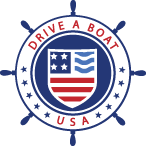Complete Guide to Recreational Boating Etiquette
Boating etiquette is about respect: respect for the water, respect for the environment, and respect for your fellow boaters.
Boaters are generally a cheerful group. However, everything runs smoothly thanks in part to a few common-sense rules of courtesy.
Following a few unspoken rules, in addition to the basic boating safety rules every boater should be familiar with, will guarantee you are a welcome presence on any waterway.
Key Takeaways
- Slow down to “no wake” speed near docks, ramps, marinas, and swimmers. If your boat is plowing (creating a massive wake), either speed up to plane or slow down to a crawl.
- Complete all boat preparation (plugs, tie-downs, loading gear) in the staging area off the ramp. Move your boat away from the fuel dock or launch ramp immediately after using it to keep traffic flowing.
- Always give way to less maneuverable vessels, especially sailboats (under sail) and human-powered craft (kayaks, canoes).
- Maintain a safe distance from other anchored vessels, fishing boats, and boats towing people for water sports.
- Anchor with ample space to allow for swinging, keep music and generator noise down, and never throw trash overboard.
- Be ready to offer assistance to fellow boaters who are having difficulty docking or appear to be in distress.
1. The golden rule: watch your wake
This is the most critical rule of boating etiquette. Your boat’s wake is the ripple or wave created by its movement, and a large wake can cause damage or danger to others.
There are a few things you can to do make sure your wake does not disturb other people using the same waterway:
Mind the “no wake” zones
These areas—often near marinas, fuel docks, launching ramps, and swimming areas—are clearly marked with buoys or markers. In these zones, slow your boat to the minimum speed required to maintain steerage.
Pass with care
When passing near smaller, non-motorized vessels (like kayaks or canoes), boats at anchor, or boats tied to a dock, slow down significantly. Your wake should not rock or swamp another vessel or cause damage to property. Always remember to follow the correct right-of-way rules for overtaking or crossing other vessels.
The “plowing” speed
If your boat has a planing hull, you need to be extra careful. Be aware that your boat often creates the largest wake when it is coming up onto a plane (the “plowing” stage). If you cannot get fast enough to plane, it is often better to slow down to a crawl.
2. Courtesy at the dock and ramp
Good etiquette starts before you even reach open water, particularly at busy launch ramps and fuel docks. Here are a few tips to make friends of your fellow boaters:
Prep before you launch
Do not tie down, load gear, or drain your boat while it is on the ramp itself. Do all preparation (installing the drain plug, removing tie-downs, loading gear) in the staging area of the parking lot before you approach the ramp.
Be efficient
Once launched, immediately move your boat away from the ramp to a courtesy dock or waiting area so the next boater can use the ramp. The same rule applies to retrieving your boat: tie up at a waiting dock first, get your vehicle and trailer ready, and then pull the boat out. Remember, there are rules for trailering and towing a boat.
Fuel and go
The fuel dock is a business station, not a social spot. Pull in, get your fuel, pay the bill, and immediately move your boat to another area if you need to stock up on ice, snacks, or other supplies.
3. Sharing the water
While the “Rules of the Road” dictate the right-of-way, etiquette dictates how you treat those you share the space with.
Be courteous
As a general rule, give way to vessels that are less maneuverable. This means powerboats should always yield to sailboats (when under sail) and human-powered vessels (canoes, kayaks, paddleboards).
Respect the “bubble”
Give other boats their space, particularly those that are anchored, fishing, or participating in water sports like tubing or wakeboarding. Always follow the safety guidelines for water skiing and toward water sports so that everyone can enjoy the water safely.
Say hello
When passing other boaters at a safe distance, a simple wave or friendly greeting is a nice way to acknowledge one another and reinforce the boating community spirit.
4. Anchoring and mooring manners
When you stop to relax, be mindful of your neighbors.
Distance is key
When anchoring in a busy spot, allow plenty of room for your vessel and others to swing as the wind or current changes. Don’t anchor so close that a swing could cause a collision.
Noise control
Sound travels very far over water. Keep your music at a reasonable volume, especially if anchored near other boats or near shore residences. If you run a generator, be respectful of the time and location.
The first boat sets the tone
If you are the first to anchor in a spot, choose your position wisely. If you are joining an existing group, try to mimic their orientation and line usage (e.g., don’t set two anchors if everyone else only has one).
5. Be clean and helpful
There’s nothing more discouraging than seeing a fellow boater show disdain for a beautiful, shared natural area, or selfishly failing to help someone in a tight spot.
Never throw trash or plastic overboard
Use designated trash facilities at the marina or bring all waste back to shore. Help keep our waterways clean for everyone.
Be prepared to help
Boaters look out for one another. If you see another boat struggling with a mechanical issue, having difficulty docking, or signaling distress, be ready to offer assistance if you can do so safely. Rendering assistance at the right moment can make a big difference to boating safely and securely.
Learn safe boating essentials with Drive A Boat USA
Now you’re ready to share the water! Being polite on the water involves following safety rules and showing respect to your fellow boaters. Remember to file a float plan before you head out, and show the same courtesy to rescue teams and maintenance crews as to recreational boat operators.
Drive A Boat USA offers 100% online state-specific boating courses that will get your certified and ready to take to the water. Learn what you need to know about the rules of the road, navigation aids, buoys and markers, and more so you can take to the water safely and respectfully in New York, Florida and California.

